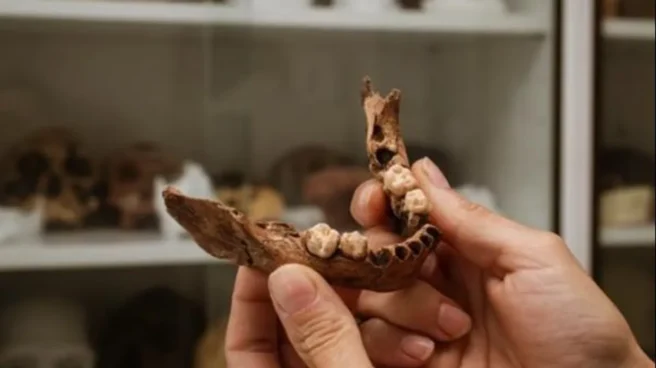

Image of the lower jaw found in the Moli del Sol deposit.
Researchers at the Catalan Institute of Human Paleoecology and Social Evolution (Iphes-Cerca) foundHuman jaw from 15,000 years ago at the Moli del Salt site.in Vimbodi i Poblet (Tarragona).
The work was carried out during May at the Moly de Sol field and found an “exceptional find” at level B2a jawbone belonging to a child approximately 4 and 5 years old with a chronology of about 15,000 years ago, Iphes-Cerca said in a statement this Thursday.
This child, From a taxonomic point of view, it corresponds, like all fossil populations of the Upper Paleolithicto the species ‘homo sapiens’, and the lower jaw is practically intact, although it is divided into two fragments, and has two milk molars on each side.
The lower jaw has been particularly associated with a semi-circular stone structure that may have been built by humans, but the relationship between this structure and human remains has yet to be determined and will probably have to wait for completion. level.
“exceptional” find
In the Iberian Peninsula, the discovery of human remains from the Upper Paleolithic is an “exceptional event”, and in the case of the end of the Madeleine period, most of the remains are isolated finds, often discovered during ancient excavations.
This lower jaw is added to several sites in Catalonia that provided remains from this period, such as Balma de Gilaña or Cova Gran in Lleida, and became “oldest fossil found in southern Catalonia”.
The lower jaw was cleaned using the Iphes-Cerca restorative technique. so that it can be manipulated for further study.
From now on, a number analytics that will provide information about these populationsand genetic studies will establish kinship with other modern populations.
The available data indicate that the end of the Upper Paleolithic was a very dynamic time from a demographic point of viewwith the arrival of new human groups that replaced or mingled with those who lived in Europe before that time.
Source: El Independiente